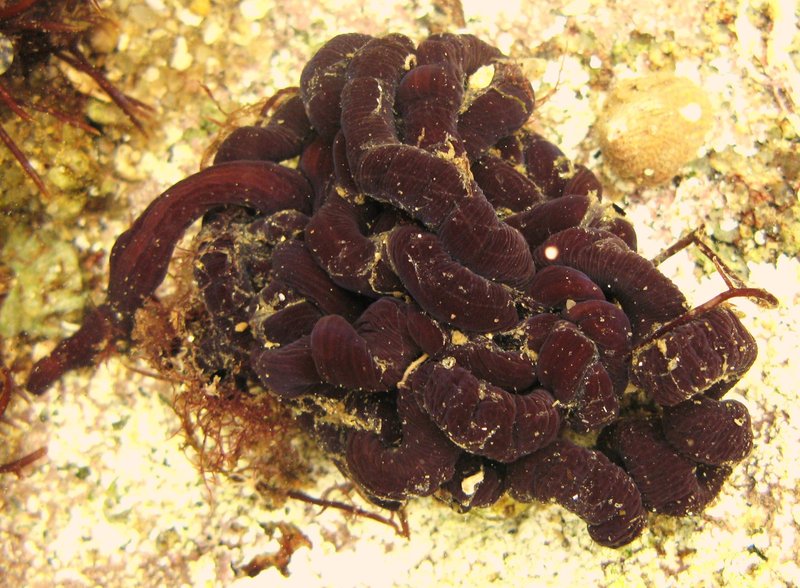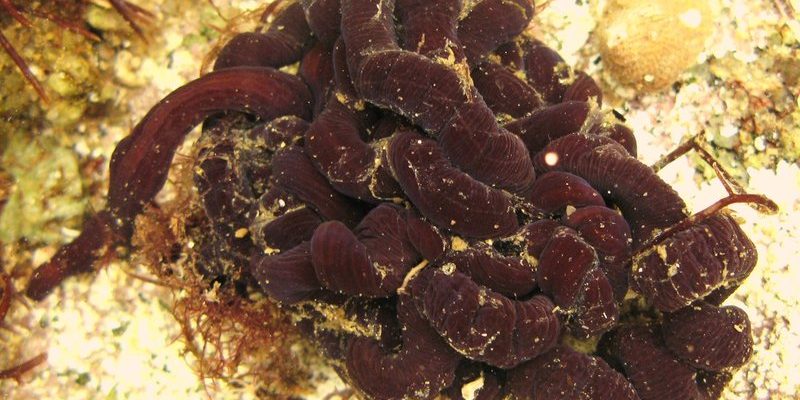
Imagine trying to find your way through a thick forest when suddenly, you stumble upon a vibrant, twisting ribbon that stretches on and on. The bootlace worm is much like that—its long, slender body can reach lengths of up to 55 meters (or about 180 feet) in some cases! It’s not just long, though; it’s also fascinating. These worms are not only impressive due to their size but also because they offer a peek into the wonders of marine biology. So, let’s dive into the world of the bootlace worm and explore what makes it so unique!
Where Do Bootlace Worms Live?
Bootlace worms primarily inhabit the coastal waters of Northern Europe, particularly in places like the United Kingdom and the Scandinavian Peninsula. They prefer *muddy or sandy substrates*, where they can hide and burrow. You might find them tucked away in tidelines, estuaries, and even within coastal marine environments. If you’re lucky enough to spot one during a beach stroll, you’ll likely see just a small section of its long body peeking out of the sand.
These worms tend to thrive in environments rich in organic matter. They feast on tiny organisms and detritus, playing a significant role in the marine ecosystem. Think of them as nature’s recyclers, constantly breaking down dead material and contributing to nutrient cycles. Without creatures like the bootlace worm, the ocean could become less vibrant and healthy.
The Anatomy of a Bootlace Worm
The bootlace worm has a *remarkably simple yet effective* anatomy. Its body is elongated and soft, making it highly flexible. This flexibility is vital for its survival, allowing it to squeeze into tight spaces or burrow into the ocean floor with ease. The worm is made up of small segments and has a distinct head region, but don’t expect to see typical “worm” facial features—these guys don’t have eyes or tentacles like some other marine creatures.
One of the most fascinating aspects of the bootlace worm is its *ability to regenerate*. If a part of its body is damaged or lost, it can often regrow it! This remarkable feature ensures that bootlace worms can survive encounters with predators or even accidents in their natural habitat. Imagine if you could regrow an arm after a fall—it’s pretty impressive, right?
Feeding Habits of Bootlace Worms
Bootlace worms are *predominantly carnivorous*. They consume small organisms by extending their bodies into the sediment and filtering the particles available. Their diet mainly consists of *tiny polychaete worms, crustaceans, and dead organic matter*. It’s fascinating how they use their long bodies to sift through the sand, much like a vacuum cleaner sucking up anything edible.
When they encounter food in their burrow, bootlace worms can quickly extend their bodies and entrap their meal. This method of feeding not only helps them find nourishment but also keeps them well-hidden from potential predators. It’s a bit like having a secret stash of snacks that you can access at any time—very handy for survival!
Reproduction and Life Cycle
The reproduction of bootlace worms is just as interesting as their physical attributes. These worms are *hermaphrodites*, meaning each individual possesses both male and female reproductive organs. This duality allows them to mate with any other bootlace worm, increasing their chances for successful reproduction.
After mating, the worms lay eggs that can hatch into *larvae*. The larvae eventually develop into adult bootlace worms. The entire process is influenced by environmental factors, such as temperature and food availability. Here’s the thing: it can take time for these larvae to mature into their lengthy adult forms, sometimes several years! But once they do, they can truly stretch out and become one of the longest animals on Earth.
Bootlace Worms and Their Environment
The bootlace worm plays a vital role in marine ecosystems. Their feeding habits help break down organic matter, enriching the seabed and providing a healthier environment for other marine life. You might not realize it, but these creatures contribute significantly to the overall health of our oceans.
However, like many invertebrates, bootlace worms face threats from human activity, such as pollution and habitat destruction. You might be wondering why this matters. Well, a decline in bootlace worm populations can have a ripple effect, impacting other marine species that rely on a healthy ecosystem. It’s a reminder of how interconnected life is, even in the depths of the oceans.
Fascinating Facts About Bootlace Worms
Let’s wrap up our journey with some *fun facts* about bootlace worms that you might not know:
- Bootlace worms are among the longest animals on Earth, with some measuring over 55 meters in length!
- They are gliding through the water in their juvenile stage, looking for food and a safe habitat to grow.
- Their unique anatomy allows them to dissolve toxins from their body, making them resilient to pollution.
- Though they are harmless to humans, their long, slender appearance can be a bit unsettling for some.
These fascinating creatures challenge our perception of what invertebrates can be. They remind us just how wondrous and varied life in the ocean is!
Now that you know what a bootlace worm is, you can appreciate just how extraordinary this giant invertebrate is. From its impressive length to its role in marine ecosystems, the bootlace worm proves that there’s much more to our oceans than meets the eye. So, the next time you hear about deep-sea wonders, remember this squishy, ribbon-like creature and the essential part it plays in maintaining the health of our planet’s waters.
Whether you’re planning a trip to Europe to see them or just indulging your curiosity, bootlace worms are definitely creatures worth knowing about!

